Have you compared the different layouts of electric radiators? They come in vertical and horizontal designs, featuring modern styles that fit any room in your home, whether the kitchen, office, garage, or conservatory. You can choose between wall-mounted or freestanding electric radiators, depending on your preference and the aesthetic you want for your home.
Did you know that improper handling of electrical equipment, like your “wall mount electric radiator”, can increase the risk of electrical hazards? To keep your home safe, always ensure electrical outlets or cables are kept dry and positioned away from the unit. Proper preparation and regular checks are key to avoiding potential risks.
This guide, crafted by the professional team at Best Electric Radiators, will help you make informed decisions and ensure your heater’s safe and effective installation on the wall.
Essential Tools Checklist for Wall Heater Mounting
Gathering the necessary tools and considering the environment are crucial before starting your wall heater mounting project. Proper preparation ensures a smooth installation and a safe working space.
Having everything ready during the process helps maintain efficiency and accuracy. After the job is done, cleaning up and ensuring all components are securely in place is key.
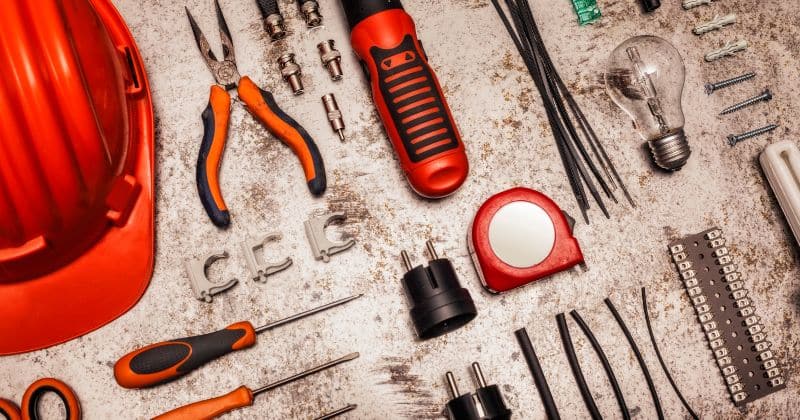
Pre-Preparation: Getting Ready for Wall Heater Mounting
Gathering all the necessary tools and setting up your workspace before you begin is essential to ensuring a smooth installation process.
- Drill: Essential for creating holes in the radiator wall.
- Measuring Tape: Ensures accurate measurements for the wall mount electric radiator.
- Spirit Level: This guarantees that your radiators’ wall mounts are perfectly horizontal.
- Pencil: Used for marking precise drilling points.
- Workspace Safety: Ensure the area is well-lit and free from obstacles to prevent accidents.
During Preparation: Setting Up for Success
With your tools ready, ensure everything is correctly installed for a stable and secure fit.
- Drill Bits: Select the appropriate sizes for drilling into different wall materials.
- Wall Plugs: Crucial for securing the wall heater mount brackets to the wall.
- Screwdriver: Necessary for tightening screws during the wall heater mounting.
- Environmental Considerations: Minimise dust and noise during installation. Ensure the area is well-ventilated for a comfortable working environment.
Post Preparation: Final Checks and Clean-Up
Once the installation is complete, tidying up and ensuring everything is securely in place is important.
- Vacuum Cleaner: Use to clean up any dust and debris from the installation.
- Cleaning Cloth: Wipe down the area to remove any remaining dirt or dust.
- Final Check: Double-check that all components are securely fixed and that the heater on wall is stable and functioning correctly.
- Environment Check: Ensure no tools or materials are left behind that could cause harm or clutter the space.
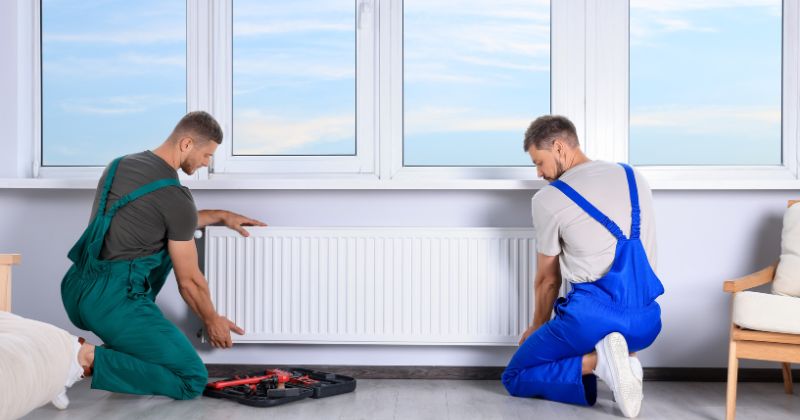
Step-by-Step Guide to Installing Your Wall Mount Electric Radiator
Let’s make the process of installing your wall mount electric radiator straightforward. Follow these steps to ensure a secure and efficient setup.
Step 1: Choosing the Optimal Location for Your Wall Hung Radiators
Choose a location where your wall hung radiator won’t be blocked by furniture or hidden behind curtains. It’s important to keep the area clear for better airflow and heating efficiency.
Make sure it’s near a power outlet to avoid the need for extension cords. Also, avoid placing it under windows or in draughty areas, as this can reduce its ability to heat the room effectively.
Step 2: Accurate Marking for Radiator Wall Installation
Mark where you’ll place the brackets with a pencil. Align these marks with a spirit level to ensure your wall-mounted radiators are straight. This step prevents tilting or misalignment during installation.
Step 3: Drilling Holes for Wall Mounted Radiators
Drill into the marked spots on the radiator wall. Ensure the drill bit matches the size of your wall plugs. Accurate drilling prevents the brackets from loosening over time.
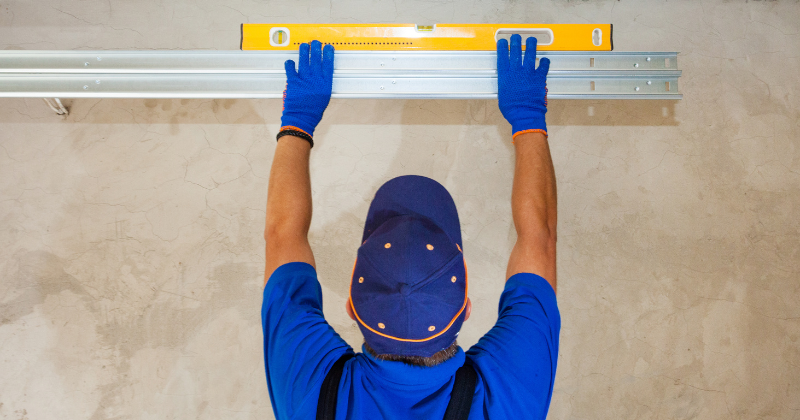
Step 4: Securely Attaching Wall Heater Mount Brackets
Insert the wall plugs into the drilled holes. Attach the wall heater mount brackets securely by driving screws into the wall plugs. This ensures your radiator stays in place and is safely mounted.
Step 5: Properly Mounting the Electric Radiator on the Wall
Lift the radiator and carefully mount it onto the brackets. Ensure the radiator sits flush against the wall, avoiding gaps that can cause instability.
Step 6: Ensuring Your Radiator is Securely Mounted
Gently pull on the radiator to check its stability. If it moves, tighten the screws on the brackets. A secure fit is crucial for safety, especially in homes with children or pets.
Step 7: Electrical Connection Options for Wall Mounted Radiators
Plug your wall mount electric radiator into a nearby socket, ensuring that the outlet is easily accessible. Make sure the socket is positioned at a safe distance from the radiator to prevent any overheating risks. Always check that the power cable is not stretched or twisted, as this could lead to damage over time.
Step 8: Testing the Functionality of Your Wall Mounted Electric Radiator
Turn on the radiator and test all settings. Ensure it heats up correctly and that the controls are responsive. This step confirms that the installation was successful.
Step 9: Setting Up Smart Features for Wall Mounted Electric Radiators
If your radiator includes smart features, connect it to your Wi-Fi and follow the manufacturer’s instructions to set up a remote control via an app. This adds convenience and flexibility to your heating system.
Step 10: Final Safety Check for Wall Heater Mounting
Inspect the entire installation. Confirm all screws are tight and there are no exposed wires. Ensure the heater on the wall is stable and operational. This final check ensures everything is safe and ready for use.
Following these steps, you can confidently install your wall mount electric radiator, ensuring it’s secure, efficient, and ready to keep your home warm.
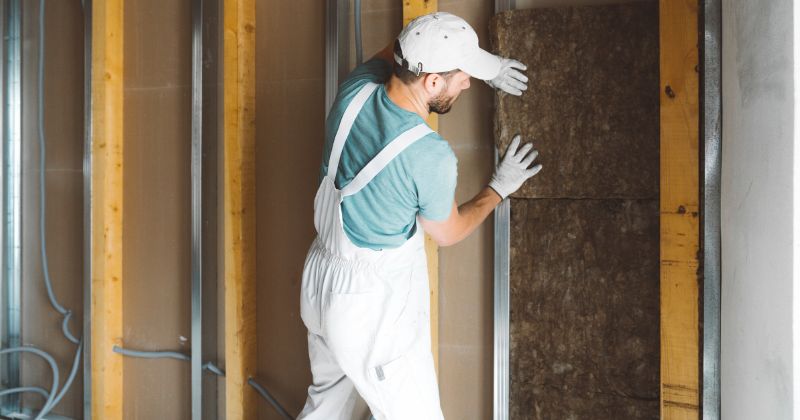
Common Installation Mistakes to Avoid
When installing a wall mount electric radiator, it’s crucial to recognise and avoid common safety and performance mistakes. Being aware of these pitfalls helps ensure a smooth and successful installation process.
Avoiding Levelling Errors in Wall Mounting Radiators
Radiators that aren’t level won’t distribute heat evenly, and the imbalance can strain the brackets. Always use a spirit level to check alignment before securing the radiator. This small step can prevent unnecessary wear and tear over time.
Importance of Comprehensive Safety Checks
Skipping safety checks can lead to serious hazards. After mounting the wall mount electric radiator, confirm that all connections, screws, and brackets are tight and secure. Regularly revisit these checks to maintain long-term safety.
Ensuring Proper Placement Near Power Outlets for Radiators Wall Mounted
Placing the radiator far from a power outlet can result in unsafe extensions or exposed cables. Install your radiator close to an outlet to maintain a tidy appearance and reduce electrical risks. This also minimises the chance of tripping hazards.
Failing to Consider Wall Strength
Mounting a radiator on a weak wall can lead to accidents. If the wall can’t support the weight, the radiator may fall, causing damage or injury. Use appropriate wall anchors if mounting on drywall or plasterboard.
Incorrect Drill Bit Size
Using the wrong drill bit can result in holes that are too large or too small, leading to an unstable mount. Match the drill bit size to the wall plugs to ensure a secure fit. Double-check the size before drilling to avoid mistakes.
Neglecting to Check for Hidden Pipes or Wires
Drilling without checking for hidden pipes or wires can be dangerous and costly. Use a stud finder or pipe detector before drilling to ensure the area is clear, preventing damage and potential hazards. This simple check can save you from costly repairs.
Overlooking the Need for Proper Insulation
Failing to properly insulate the area where the wall mount electric radiator will be installed can lead to heat loss. Ensure the wall behind the radiator is well-insulated to maximise efficiency and reduce energy costs. Poor insulation can undermine the radiator’s effectiveness.
Not Preparing the Household for Electric Heating
Before installing, ensure your household electrical system can handle the additional load of the wall mount electric radiator. Overloading circuits can cause frequent trips or even pose a fire risk. Upgrade your circuit if necessary to support the additional load.
Ignoring the Installation Manual
Not reading the installation manual can lead to errors, compromising safety and performance. Every wall mount electric radiator has specific installation requirements. Take the time to read the manual thoroughly before beginning the installation. Following the manual ensures you don’t miss any critical steps.
Maintenance Tips for Wall-Mounted Electric Radiators
Proper maintenance is crucial to keep your wall mount electric radiator functioning well and safely. Here are simple yet effective tips to help you maintain your radiator.
Routine Cleaning for Wall Mounted Radiators
Dust can gather on your radiator, reducing its efficiency. Regularly wipe the surface with a soft, dry cloth to remove dust. For a deeper clean, turn off the radiator, let it cool, and use a damp cloth to clean the surfaces gently. Keeping the radiator clean improves its performance and extends its life.
Regular Safety Inspections for Wall Heater Mounts
Frequently inspect the wall heater mount brackets and connections. Check for loose screws or weakened brackets. Tighten any loose fittings right away and replace worn parts to avoid accidents. Also, check the electrical connections to ensure no exposed wires or damage. These inspections help keep your wall-mounted electric radiator safe and secure.
Expert Thoughts: DIY Installation vs. Professional Help
When deciding between DIY installation and hiring a professional for your wall mount electric radiator, consider the following:
- DIY Installation: Handling the installation yourself can save money and give you a sense of accomplishment. It allows you to control the process and customise the setup. However, it requires knowledge of electrical work and wall mounting. Mistakes can lead to safety issues or affect the radiator’s performance.
- Professional Help: A professional ensures the installation is done correctly and safely. They have the skills and tools to manage complex tasks and meet safety standards. While it costs more, professional installation provides reliability and ensures your wall-mounted electric radiator works efficiently.
- Other options: If you are considering alternatives, there are freestanding electric radiators. For more information on whether a freestanding unit might suit your needs, check this blog: Electric Radiators: Wall Mounted vs. Freestanding?
Takeaways for Installing Wall Mounted Electric Radiators
Here are key points to remember for a successful installation of your wall mount electric radiator:
- Choose the Right Location: Pick a spot that allows even heat distribution and is close to a power source. Avoid areas with high moisture or direct sunlight.
- Accurate Measurement: Measure the space carefully and mark the drilling points before you start. This helps in a precise fit and reduces the need for adjustments.
- Use Proper Tools: Gather all the necessary tools, including a drill, spirit level, and screwdriver. Using the correct tools helps prevent errors and ensures a secure installation.
- Follow Safety Procedures: Turn off the power before working on electrical connections. Check for hidden wires or pipes before drilling to avoid damage.
- Regular Maintenance: Clean the radiator regularly and check for any signs of wear or damage. Regular inspections keep the radiator efficient and safe.
Recap Checklist for Wall-Mounted Electric Radiators
Before purchasing and finalizing a wall-mounted electric radiator, it’s crucial to consider several key factors to ensure you select the right unit for your needs. A well-planned approach can help you avoid common pitfalls and ensure optimal performance and safety.
Below is a checklist presented in table format, outlining actionable items you should verify before making a decision.
| Action Item | Description |
| Check the Heating Requirements | Assess the size of the room and heating requirements to choose a radiator with adequate capacity. |
| Measure the Installation of Space | Measure the intended installation area to ensure the radiator fits and meets clearance guidelines. |
| Verify Wall Suitability | Ensure the wall is structurally capable of supporting the radiator’s weight without modifications. |
| Consider Electrical Requirements | Check if your electrical system can handle the load; may need a dedicated circuit for higher wattages. |
| Evaluate Controls and Features | Decide if you need efficient operation features like timers, thermostats, or smart controls. |
| Look for Safety Certifications | Confirm the radiator meets current safety standards and regulations to ensure safe operation. |
| Plan for Aesthetic Fit | Choose a style and color that complements your interior decor and meets your functional needs. |
| Review Warranty and Support | Check warranty details and whether the manufacturer provides installation support or advice. |
By following this checklist, you can make a more informed and confident decision when choosing a wall-mounted electric radiator.
Why Choose Best Electric Radiator Company for Professional Installation Advice
When considering an electric radiator for your home, it’s crucial to get advice that fits your unique needs. Best Electric Radiator Company is here to help. We offer expert guidance that is tailored to your household’s long-term requirements. Whether you are upgrading or installing new, our team ensures you choose the right model for your space.
We understand every home is different. That’s why our advice is personalised. Plus, our products come with a comprehensive warranty, ensuring your investment is protected. Let us help you make the best decision for efficient and effective heating. Trust us to enhance your home’s comfort with the perfect electric radiator solution.
For detailed information on our warranty offerings, please visit our warranty page.
FAQs
How Do I Safely Install a Wall Mounted Electric Radiator?
To install a wall-mounted electric radiator safely, start by turning off the power at the mains. Select a dry, accessible location near a power source. Use a spirit level to ensure the radiator will be straight. Mark where you will drill, then drill the holes and insert wall plugs. Attach the mounting brackets securely with screws.
Fix the radiator to the brackets, connect the wires according to the instructions, and check that all connections are secure before turning the power back on.
What Tools Are Needed to Wall Mount an Electric Radiator?
You’ll need a drill with the right bits for your wall type, a spirit level, a measuring tape, and a screwdriver. Wall plugs and screws are necessary to secure the brackets. A pencil helps mark the drilling points, and a vacuum cleaner is useful for cleaning up dust.
Can I Install a Wall Mounted Electric Radiator Myself?
Yes, you can install a wall-mounted electric radiator if you are comfortable with basic DIY and electrical tasks. Follow the manufacturer’s instructions carefully and ensure you adhere to safety guidelines. If you are unsure about any part of the installation or lack experience with electrical work, hiring a professional is safer.
How Do I Choose the Best Location for My Wall Mounted Radiator?
Select a location on an interior wall to ensure even heat distribution. Avoid areas near windows or doors to prevent heat loss. Make sure the radiator is near a power outlet and not blocked by furniture or curtains. Use a measuring tape and spirit level to position the radiator correctly.
Is It Safe to Install a Wall Mounted Radiator in a Bathroom?
Yes, but special precautions are needed. Ensure the radiator is rated for use in wet conditions. Install it away from water sources, like sinks or showers, and follow local electrical safety regulations. Using a radiator designed for bathrooms can provide extra safety.
How Do I Ensure My Radiator Is Level When Wall Mounting?
Before securing the radiator, use a spirit level to ensure it is perfectly horizontal. Mark the drilling points carefully and double-check the level as you install the brackets. This prevents uneven heating and avoids stressing the mounting brackets.
Can I Hardwire My Wall Mounted Electric Radiator?
Yes, you can hardwire a wall-mounted electric radiator, but it should be done by a qualified electrician. Hardwiring involves connecting the radiator directly to your home’s electrical system, which can be more secure and tidy but requires professional installation to ensure safety.
How Do I Maintain My Wall Mounted Electric Radiator?
Regularly dust the radiator with a soft cloth to keep it clean. Check the mounting brackets and electrical connections for any signs of wear or loose fittings. Inspect the radiator periodically to ensure it operates safely and efficiently.





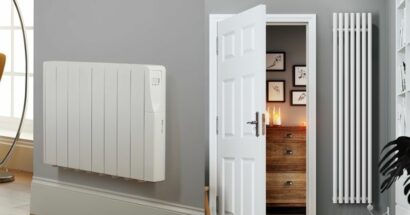
Leave a Reply